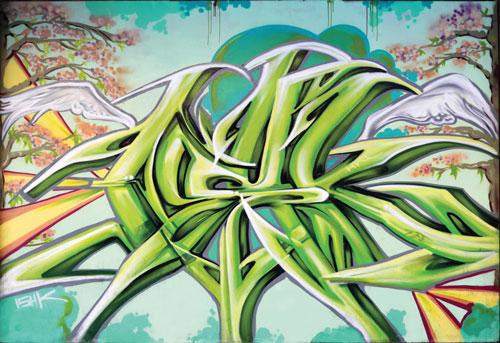.jpg)
It's 1969 Television, the audience in The David Frost Show has just had an exclusive preview of John Lennon and Yoko Ono’s new record Two Virgins. You can hear the blue rinse drying in the studio. Yoko then hands Frost a gift, Box of Smile (1967). Frost tentatively opens the box, only to see his face reflected in a mirror. Frost laughs and so do some of the audience. A little victory.
The Yoko Ono retrospective at the Museum of Contemporary Art in Sydney collects dozens of such victories for Ono. An essay of forty years in a changing art world, its title War Is Over! (if you want it) is an apt centrepiece. The most familiar of Yoko’s collaborations with her husband John Lennon, the words "War is Over" are seen in a variety of permutations. On the exhibition catalogue the text is placed against the backdrop of clouds and sky. Crimson-toned billposters illustrate the phrase on some Sydney streets. These new representations amplify the double entendre of the original’s black text on a white background. Cast against the motifs of heaven and faded blood, there is a sense of ambiguity. They reflect both death and peace. Or is it just me emboldened to look a little deeper? “It didn’t stop the war”, I can hear my old art lecturer sneer. He typified a segment of the arts establishment, who (to paraphrase John Lennon), prefer the intellectual manifestos that nobody actually reads. If Ono and Lennon did not achieve peace in their time, they arguably changed the way contemporary art is approached by audiences in mine.
Combining art and thinking is a great idea, but with not everyone coming from the same background in philosophy, history or metaphysics, it can often be confined to a limited audience. Yoko and Lennon may very well have invented contemporary art education on The David Frost Show, empowering people holistically not just to be morally aware, but culturally familiar. Today contemporary art is part of the everyday milieu. Ono’s role in this change has gone largely unrecognised. For despite the lampooning of her work over the years, Ono’s persistence has seen the public develop a way of reading her works that other artists would envy. You don’t need to be Lennon to see the link between Spike Milligan’s conceptual comedy of a brick wall driven at speed and Yoko’s Balance Piece (1998), a large electromagnet pulling your world to the left. Both show an optimism in the face of adversity often lacking in establishment approved artists. This is not an isolated case. Both Ono and Lennon’s personal lives are more analysed than the history of Australia, yet the piece My Mommy Is Beautiful (2004/2011) is an interactive work that positively reinforces the role of mothers for everyone.
Whilst the value of Yoko’s early work fits neatly into Robert Hughes’s category of “The Shock of the New”, their true value now rests in their familiarity. Apple (1966), Painting to Hammer a Nail (1961/1966), the Fluxus films Fly (1970) and Film No. 4 (Bottoms) (1966-67) have been seen in hundreds of Beatles books and films in vignette form. But here witnessed in full, our knowledge acts as an icebreaker in a larger conversation. With Cut Piece (1964) the original notion of who is being unveiled through the cut of scissors still exists, but like War Is Over! (if you want it) (1969) the passage of time feeds the message back on itself. This is heightened with two filmed performances, one of the original in 1964 and a repeat in 2003. It is a dialogue between artist and public. Ono is watching us, watching her, watching us, watching her way back when. Something unimaginable 40 years ago. In 1993 when The Simpsons paid tribute with an Onoesque character ordering the beverage of a “plum dipped in perfume served in a man’s hat”, Moe the bartender accepted the request as de rigueur. Today a lot more of us will unknowingly be tempted into the mystique of contemporary art through Yoko Ono. P.S. Don’t forget your box of smile.












